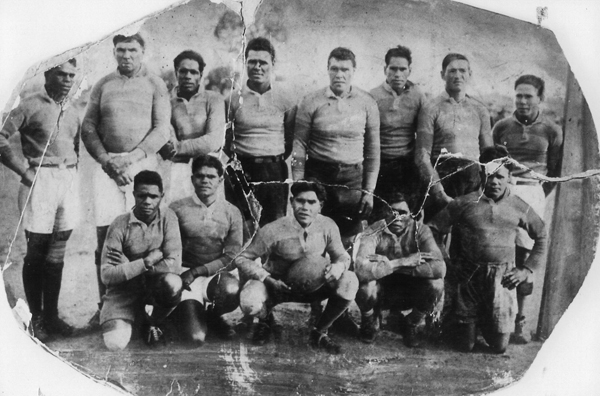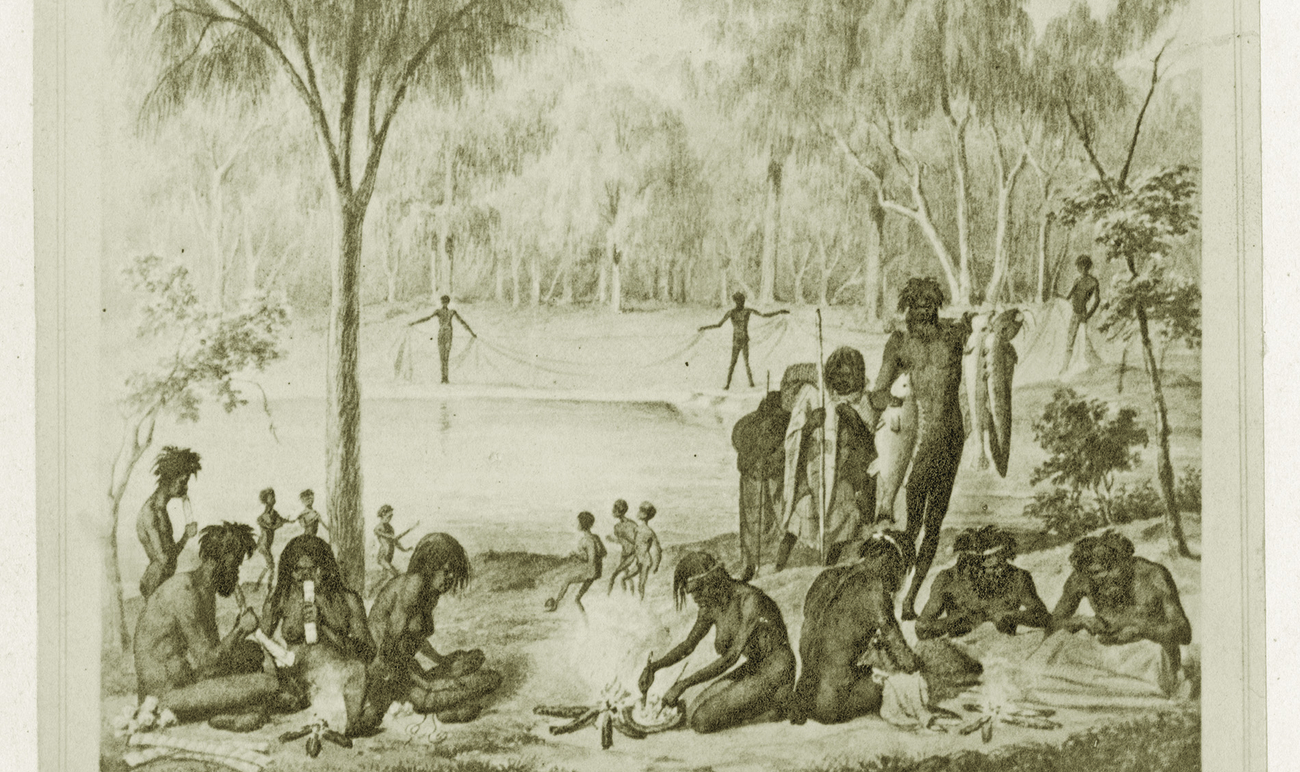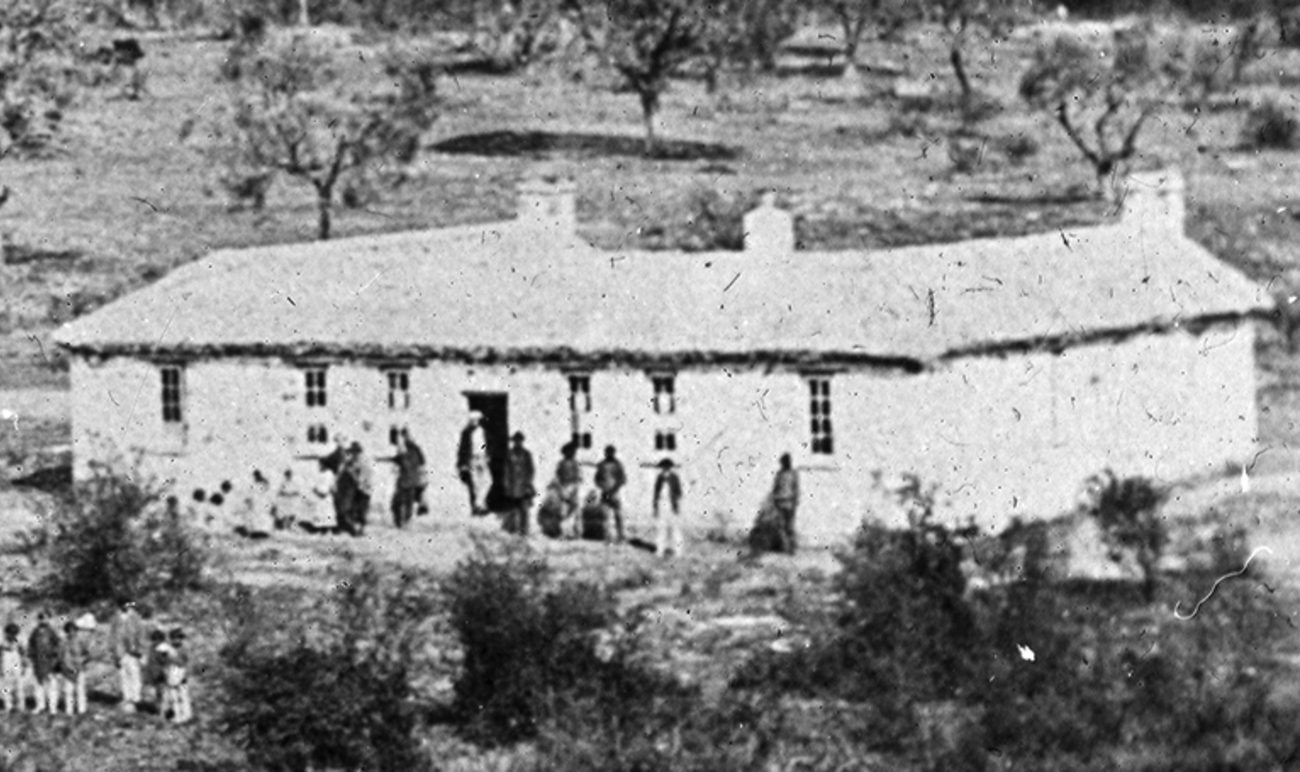With local competitions and the NRL winding up, Koori communities all over New South Wales are finalising plans for their Knockout teams. The all important jerseys and team wear are being sorted, travel and accommodation will be finalised over the next couple of weeks. The tireless team organisers are stressed. It’s Knockout time!
Our modern day corroboree has grown to be the biggest event on the Koori calendar. More than 100 teams are expected to line up in Sydney for this year’s Knockout. The communities that enter the grounds for the 46th Knockout will continue our long cultural affinity with rugby league.
My team, the Erambie Allblacks represent our small Wiradjuri community in central- western New South Wales. Our Allblacks played their first game against the Cowra Pioneers in 1922 in a game that the local newspaper reported was full of thrills. The speed and tackling of the Aboriginal team was a revelation. Reports about the game were that the new team would be hard to beat.
Newspapers reported that the team roused the spectators to a high pitch of enthusiasm with barracking not heard at the Cowra ground.

The Erambie Allblacks team c.1922. (L - R) Back row: Harry 'Major' Murray, Robert Carroll, Claude Murray, Alf 'Knocker' Williams, James 'Cutter' Bamblett, John Healand, Stanley Carroll, Ernest 'Buffalo' Whitty. Front row: Herbert 'Doolan' Murray, Alan Murray, Dave Perry, unknown, John Charles. Image courtesy of Wiradjuri elders June and Margaret Murray whose father, uncles and brothers all played in the team.
The Erambie Allblacks team c.1922. (L - R) Back row: Harry 'Major' Murray, Robert Carroll, Claude Murray, Alf 'Knocker' Williams, James 'Cutter' Bamblett, John Healand, Stanley Carroll, Ernest 'Buffalo' Whitty. Front row: Herbert 'Doolan' Murray, Alan Murray, Dave Perry, unknown, John Charles. Image courtesy of Wiradjuri elders June and Margaret Murray whose father, uncles and brothers all played in the team.
Drawing the colour line
When the Allblacks challenged the Pioneers to another game in 1923 the secretary of that club advised that no matches would be played against the Aboriginal team and that membership to the Pioneers was not open to Aborigines. Pressure from supporters forced them to change their rules and the Pioneers and other Cowra teams played matches against the Allblacks until the 1940s.
The fame of the Allblacks spread far and they drew record gates wherever they played. The crowds usually included the 200 residents of Erambie and Goolagong missions who were jubilant at their success.
Allblacks versus the Champion Reds
The Allblacks’ reputation led them to a match against the team reputed to be the best in country rugby league. In 1925 the Erambie team played the Mandurama Reds. The Cowra Free Press listed the celebrated Reds’ fine record; throughout the lengthy period of four seasons they only suffered two defeats. One of the losses was to a representative team.
The Reds specialised in winning challenge cups, they held nine cups in addition to winning their local competition.
The game was set and spectators were encouraged to roll up to Mandurama and watch the champion Reds take on the popular Allblacks.
The Allblacks defeated the champions 13-5. The result was screened in local movie theatres. That win against the Reds became part of our community’s storytelling tradition. People still talk about the time our team beat the champion Reds.
Barnstorming Allblacks
After they defeated the Reds, the Allblacks travelled around the Western District playing invitational matches. Newspapers starting calling them, the Famous Cowra All Blacks and Cowra’s Aboriginal Football Club. The town that refused to play them, a place that was deeply segregated, claimed them as Cowra’s team.
The barnstorming Allblacks included a musical ‘pre-game’ show in the form of a gumleaf band. They often played at post-game concerts too. The gumleaf band played concerts around the district. The team and the band were in demand. In 1929 the much advertised Allblacks travelled seven hours by lorry to play a mid-week game in Junee. They arrived at the town at midday. The gum leaf band played tunes in town before they marched to the ground to play. They returned home to play again that weekend.
The report on their next match in the Grenfell Record praised the team:
The visit of the Cowra All Blacks created a great deal of interest, and there was a large crowd present on Sunday to witness the match. The first quarter of an hour was sensational, as the Blacks, by their wonderful handling of the ball, put it well and truly over the locals who were beaten by the speed of the visitors…The game was one of the best witnessed here this season, and the visitors made themselves very popular by their fine game and good sportsmanship. The mascot of the team — a tiny picanniny — dressed in football togs, led them on to the field. During the half time interval the All Blacks entertained those present with some very fine music, the gum-leaf artist producing some very fine music.
One of the Allblacks players, Harry ‘Major’ Murray wrote a report about another game that season for the Cowra Free Press:
[P]laying like Trojans the ’All Blacks’ are soon rewarded, a great try being scored … after nearly the whole team had handled the ’pigskin’. This movement was a real gem and would have done credit to any class of football…The spectators are now at concert pitch and all efforts to keep them off the line are useless. The ‘All Blacks’ are still playing great football and [Wattamondara] seem to be wilting under the strain. Men are dropped, kicked and punched, yet they rise again and dive in hard and solid...The ’All Blacks’ handling is now a pleasure to watch…The Cup being handed over to the victors a good days sport is brought to a close. (29 June 1933)

Barnstorming Erambie Allblacks in 1929 prior to match against Condobolin. (L - R) Back row: Robert Carroll, John Healand, Mr Downie (club secretary), Major Murray, John Charles. Middle row: Frank Broughton, Frank Simpson, Doolan Murray, Paul Coe, Buffalo Whitty. Front row: Stanley Carroll, Dave Perry, Claude Murray, Mervyn Williams (mascot), Jim Bamblett. Image courtesy of Laurie Murray.
Barnstorming Erambie Allblacks in 1929 prior to match against Condobolin. (L - R) Back row: Robert Carroll, John Healand, Mr Downie (club secretary), Major Murray, John Charles. Middle row: Frank Broughton, Frank Simpson, Doolan Murray, Paul Coe, Buffalo Whitty. Front row: Stanley Carroll, Dave Perry, Claude Murray, Mervyn Williams (mascot), Jim Bamblett. Image courtesy of Laurie Murray.
No more Allblacks
The Allblacks looked forward to a bright future. They had the Gleeson and Eandly Challenge Cups in their possession, and their junior team, the ‘Baby Blacks’ were led by Dick McGuinnes, who went on to become a legend of country rugby league, and his elusive cousin Viney Murray. In 1930s they played in the Cowra district competition. This decade saw dramatic changes within the Erambie community as well as to the structure of rugby league in the district. The team lost players as people started leaving Erambie to live at unmanaged reserves when they tired of the intrusion of the Aboriginal Welfare Board on their lives. The Allblacks were an ageing team and the Cowra Maher Cup team was taking their promising junior talent. Many of the players who had built its reputation were in their thirties, and some were in their late forties.
Rugby league teams formed competitions leaving little room for challenge and exhibition games. The move away from the challenge system put an end to many old rivalries. The Allblacks’ traditional rivals, the Pioneers, became part of a unified Cowra team that joined the Group Nine Competition. The Pioneers played in the prestigious Maher Cup while the Allblacks were demoted to a reserve grade competition. They still drew large crowds. Newspapers encouraged readers to ‘See the Nippy All Blacks in Action’.
Even with the Allblacks' growing fame, these changes brought the successful run of this unique football team to an end.
In August 1940 the Famous Erambie Allblacks played their last game. They completely outplayed Cowra in a fast and open game. The next year Cowra again refused to play them. In the years that followed Erambie’s best players gained fame as the ‘black diamonds’ of Cowra’s Maher Cup team.
A new standard
The Erambie Allblacks re-emerged with the introduction of Koori rugby league carnivals in the late 1970s. Gone were the gold and maroon team colours, replaced with a new standard of Koori identity: the 1981 Erambie Allblacks bore the colours of the Koori flag that represent unity and political awareness. The latest version of the team was organised by the grandchildren of the original, Famous, Allblacks. They hosted a Koori knockout competition in the early 1980s but applications to rejoin old rivals in local competitions in 1987, 2004 and 2005 were rejected.
Today, the Erambie Allblacks play in annual Koori rugby league carnivals. The team wears the names of the 1922 players on their jerseys in recognition of their barnstorming achievements.
Read more about the sports stars of the Erambie community in Laurie’s book, Our Stories are our Survival.

